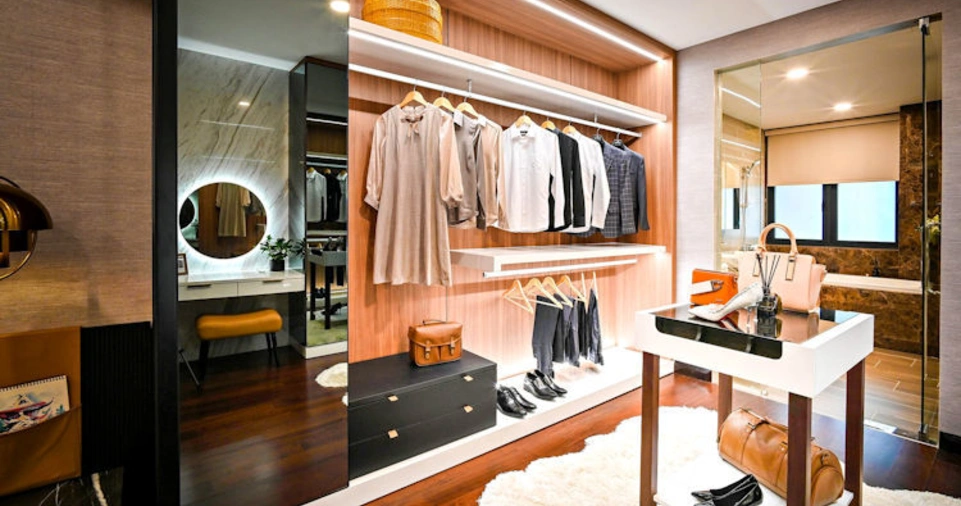A capsule wardrobe is a curated collection of timeless, versatile clothing that can be mixed and matched to suit a variety of occasions. The goal is to reduce clutter, simplify dressing, and create a closet filled only with items that fit well, reflect your style, and serve your lifestyle.
With the growing emphasis on minimalism, sustainability, and intentional living, capsule wardrobes have surged in popularity.
In this comprehensive guide, we’ll explore how to build a capsule wardrobe from the ground up, including selecting the right pieces, organizing your closet, shopping smart, and maintaining your wardrobe over time. Whether you’re new to the concept or looking to refine your current wardrobe, this guide offers practical, actionable advice.
What Is a Capsule Wardrobe?
A capsule wardrobe typically consists of 30 to 50 essential clothing items that can be worn in multiple ways. These include tops, bottoms, outerwear, dresses, and shoes—but exclude activewear, loungewear, underwear, and accessories. The concept originated in the 1970s but was popularized by fashion experts like Donna Karan and bloggers in the minimalist fashion space.
Benefits of a Capsule Wardrobe
- Saves Time: Fewer choices mean faster decisions.
- Saves Money: Less impulse buying.
- Reduces Clutter: No more overflowing closets.
- Promotes Sustainability: Fewer, better-quality items reduce environmental impact.
- Enhances Personal Style: Forces you to focus on what you love and what works for you.
Step-by-Step Guide to Building a Capsule Wardrobe

Define Your Style and Lifestyle Needs
Before purging your closet, understand your lifestyle and style preferences. Ask yourself:
- What activities dominate your week (work, gym, social events)?
- What climate do you live in?
- What colors and fits do you gravitate toward?
- Do you prefer trendy or classic styles?
Create a mood board or Pinterest folder to visualize your ideal style.
Audit Your Current Wardrobe
Take everything out of your closet and evaluate each item:
- Does it fit well?
- Do you love wearing it?
- Is it in good condition?
- Does it work with other items?
Sort items into four piles: Keep, Donate, Sell, Store (seasonal or sentimental).
Choose a Color Palette
Stick to a cohesive color palette to make mixing and matching easier. Start with:
- Neutrals: Black, white, gray, navy, beige
- Accent Colors: One or two bold colors for personality
A unified palette ensures more outfit combinations with fewer items.
Select the Essentials
While your wardrobe will reflect your unique needs, a balanced capsule wardrobe often includes:
| Category | Examples | Quantity (Recommended) |
|---|---|---|
| Tops | T-shirts, blouses, button-down shirts | 6-8 |
| Bottoms | Jeans, trousers, skirts | 4-6 |
| Outerwear | Blazers, jackets, coats | 2-4 |
| Dresses | Casual, formal | 2-3 |
| Shoes | Flats, sneakers, boots | 3-5 |
| Seasonal Items | Sweaters, shorts, swimwear | 3-5 |
Fill the Gaps
Once you’ve identified what’s missing, create a shopping list. Shop with intention:
- Prioritize quality over quantity
- Choose pieces that align with your style and fit well
- Avoid fast fashion when possible
Store Off-Season Items
Keep your active wardrobe streamlined by storing seasonal clothes elsewhere. Use bins or under-bed storage to keep them out of sight and mind.
Maintain and Rotate
Capsule wardrobes are not static. Every 3–4 months, reassess:
- Remove items you didn’t wear
- Add or replace as needed
- Refresh for the upcoming season
Shopping Tips for Capsule Wardrobes
Quality Over Quantity
Invest in durable, high-quality pieces that withstand regular use. Natural fabrics like cotton, wool, and linen last longer and look better over time.
Mindful Brands
Support brands that prioritize ethical manufacturing and sustainable materials. Some reputable names include:
- Everlane
- Pact
- Eileen Fisher
- People Tree
Try Before You Buy
Fit is crucial. When shopping in-store, try things on. If shopping online, check size charts and reviews.
Stick to Your List
Impulse buys derail capsule wardrobes. Only buy what you need and what complements your existing pieces.
Capsule Wardrobe Examples by Lifestyle

Office Professional
- Blazers, button-down shirts, trousers
- Neutral dresses
- Closed-toe flats or loafers
Stay-at-Home Parent
- Comfortable, easy-to-wash clothes
- Stretchy jeans or leggings
- Casual tees and cardigans
Creative Professional
- Statement pieces (jacket, shoes)
- Unique prints and textures
- Stylish yet comfortable outfits
Travel-Friendly
- Wrinkle-resistant fabrics
- Lightweight layers
- Versatile shoes
Minimalist
- Strict color palette
- Clean lines, no patterns
- High-quality basics
Common Mistakes to Avoid
- Copying someone else’s style entirely: Adapt ideas to your personality.
- Focusing too much on numbers: It’s about functionality, not counting.
- Neglecting comfort: If it’s not comfortable, you won’t wear it.
- Ignoring lifestyle realities: Your wardrobe should serve you, not a fantasy.
ALSO READ: How to Start Investing in Cryptocurrency?
Conclusion
Building a capsule wardrobe isn’t about restrictions—it’s about intention. It’s about curating a closet that reflects your personal style, supports your lifestyle, and simplifies your daily routine.
By investing in quality over quantity and maintaining a cohesive, flexible wardrobe, you’ll save time, reduce stress, and dress with confidence every day.
Take it one step at a time, and remember: your capsule wardrobe should evolve with you. Trends may come and go, but personal style is timeless.







